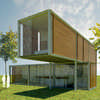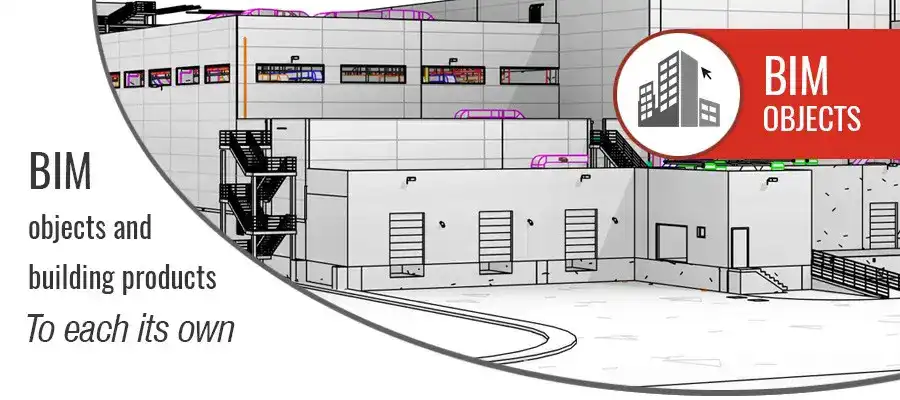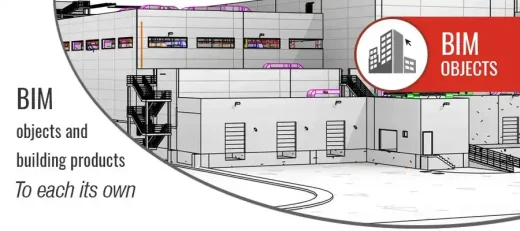BIM Object Repositories, Digital Construction Technology, Structures CAD Design Library
BIM Objects and Building Products
Building Information Modelling – Construction Computer Design Information + News
BIM objects and building products: To each its own
Building contractors find themselves to be clinging on BIM only for construction management, but they must not leave out building products manufacturers from their BIM workflow.
3 Dec 2017
Building Information Modeling Objects and Building Products
If BIM is Virtual building construction, BIM objects are the virtual designs of properties glorifying building construction in a virtual environment. As they say, “You cannot build anything without construction materials”; BIM-ready models, too, cannot be as-built without BIM objects.
BIM object repositories: Intersection of manufacturers & contractors
Listing down reasons for using Building Information Modeling (BIM) objects would be a long task, but a really prominent one bottom is –product quality matters in the digital world as well as for a smooth transition from manufacturing to design to construction. In its simplest form, BIM objects can be defined as the CAD symbols and 3D CAD models with meta-data such as material, kind of object, its classification etc.
However, depending on the use of the BIM objects, the definition is amended and BIM object libraries are prepared. Sometimes they are referred to as object templates; while other times, they are considered to be the exact as-built of the concerned building product.
Based on such varying definition we, BIM users, have classified BIM objects as generic and specific objects. Contractors and designers know that they will need a door for so and so specification of a particular location. But the door supplier and manufacturer are yet to be finalized, so the exact and detailed specification is still unknown.
This means that the geometry is known, but physical characteristics are not. Such are the diversified cases of defining BIM objects but, when all the properties are known and then the objects are prepared, it makes a real point of convergence. It turns out to the gateway for building products manufactures and contractors to be on the same page as far as BIM models are concerned.
BIM objects: Using them the best
It is more commonly found that designers use BIM objects as a generic model during design stages and as the designing stage of the project moves forward, they get converted to more specific ones. Like when a designer or a Revit user is designing the building plans and isometric views, they pick up the generic BIM objects from the renowned online catalogs of the manufacturer or create one for Revit Family storage.
These objects can then be modified and upgraded as per the specification. As the project progresses, these specified models can be used downstream for accurate results of design coordination in BIM, clash detection, construction scheduling and quoting for bids and tender approvals.
These objects can evolve as needed; however, since detailed models will consume more storage space, they are rarely transferred for documentation. Even today’s contractors do not see the need of updating the models even for O&M since all the information can be retrieved from PDTs available.
Evolution of BIM objects for lifecycle planning from A to Z
Talking of O&M, BIM-ready models are only as intelligent and detailed as their BIM objects. When BIM models are prepared for lifecycle management purpose, facility managers are in dire need of every little detail available. When BIM objects are specified, together with 3D BIM-ready models, they form a single enterprise of truth across the project tenure.
Starting right from the design planning stage until lifecycle management, including design coordination, clash detection and resolution, spatial arrangement, QTOs, quoting, tendering, RFIs design specific tasks can be managed easily with BIM objects in place.
BIM objects are also the storage source of the history, issue and future of building products as well as the whole asset. But during operations, the structure of BIM objects is of prime importance. It helps the contractor and site engineers extract actionable data in a standard format that could be used for information such as the supplier, warranty and also to automate the task for maintenance checklist, parts replacement etc. On the other hand, for paper-based data or excel sheet, it eventually gets buried under a heap of new incoming information of other ongoing construction projects.
Requisites for creating BIM object library
Generally, if you are a manufacturer by now you should have adopted BIM workflows knowing the fact that the manufacturers who haven’t will soon be knocked out. And if you are a contractor, you must know how to get them through various online open sources, NBS library for one.
Alongside, there should be tools that support easy workflow for design engineers, viz. plugins for interoperability and data exchange for import and exports of models generated in CAD to BIM and vice versa. Designers will need manufacturers on board, wholeheartedly for generating templates, standards and installation guidelines that are error free. To make your libraries more strong, you can use wizards and tools that convert existing documents into a structured data and one single format.
Partnering with a design and BIM consultant will give you an edge over your competitors, who essentially can be anyone from pros to amateurs. Each building product manufacturer or vendor will need BIM objects in coming times to match their deliverables with the expectations of contractors. Thus, to each building product, you need BIM object.
About Author
Bhushan Avsatthi is a Director at Hi-Tech iSolutions LLP. Bhushan imbibes the prophecy of efficient and prudent use of energy in his day to day life and advices his team to do so as well. He is also involved in green initiatives like nonprofit tree plantation project and promotes using cycles for commuting small distances. Bhushan, handles a team of architects, Structural and MEP engineers, LEED consultants and Energy modeling experts.
BIM Objects and Building Products: Building Information Modelling image / information received 031217
Location: India
BIM
BIM library for offsite construction

image courtesy of SMS
BIM: Building Information Modelling
NBS And Vectorworks Partner to Streamline Design Process
Macro BIM: Building Information Modelling
BIM for Ageing Roads, Highways & Bridges
Website: BIM – Autodesk
Architectural Concept Designs
Metropolitan Vertical Theme Park
Design: Jun Sakaguchi architect

image courtesy of architects
iHabit Modular System
Comments / photos for the BIM Objects and Building Products page welcome





